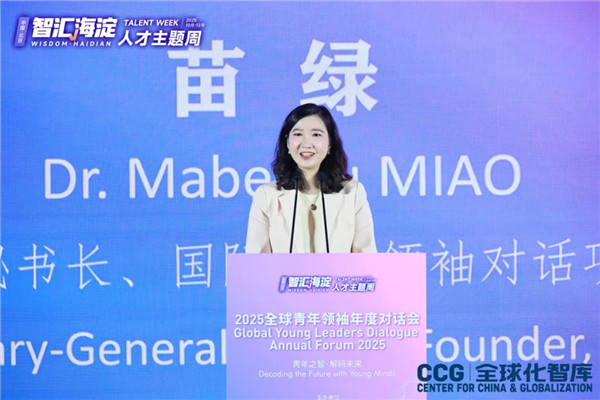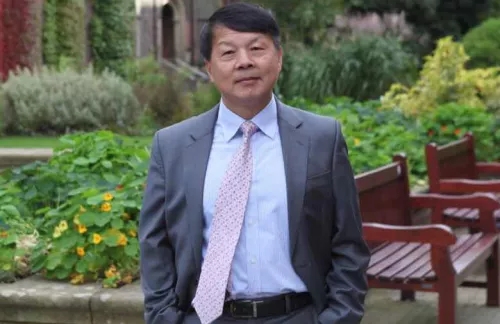Wang Huiyao: China rises from SEZs to global economic anchor
October 26 , 2020
By Wang Huiyao | President of the Center for China and Globalization(CCG)
Moving quickly to implement the policies announced by President Xi Jinping in his Oct 14 speech celebrating the 40th anniversary of the creation of the Shenzhen Special Economic Zone, the National Development and Reform Commission announced on Oct 18 a series of reforms opening up artificial intelligence-based businesses and financial markets.
Intellectual property protection, economic and business legislation, and talent attraction will be strengthened and further marketized.
After the ceremony, Xi laid a wreath on Deng Xiaoping’s statue to commemorate Deng’s policy of reform and opening-up. This strongly symbolized China’s steadfast intention to continue opening up its economy to foreign investment and competition and pushing market-based reform.
Recognizing in the 1980s that China needed to be flexible and adaptive, Deng famously said that the nation needed to experiment with many policies-”crossing the river by feeling for stones”. Now, China is implementing much more detailed and planned-out market-based reforms than those early steps.
Shenzhen continues to be a prototype and arena for experimenting with policies that might later be implemented throughout the country. With the approval of the establishment of SEZ by China’s national legislature on Aug 26, 1980, the impoverished fishing village has been transformed into a modern metropolis over the past four decades.
In the next four decades it will be further transformed into an example of a very livable “people-centered” city that also is on the leading edge of technology and manufacturing.
Economic opening-up in China takes pilot cities as the starting point and has upgraded the entire country’s economy incrementally based on the experiences of the first four SEZs and the opening-up of cities along the coastal areas, including the establishment of the Pudong New Area in Shanghai and 21 pilot free trade zones. The recent announcement of the Hainan pilot free trade port is another bold step in reform and opening-up.
In this turbulent period, the COVID-19 pandemic has accelerated rising protectionism and unilateralism in economic globalization, which curtails international trade and investment dramatically. Innovations of science and technology have undergone profound adjustments. Some countries are limiting investment and attempting to stop the spread of technology.
But, given all the hindrances, Xi highlighted in his 50-minute speech the new “dual circulation” development pattern is not a “closed domestic cycle”, making it clear he wants a “new open economic system”.
The high-level confirmation of the further opening-up of China also partly supports the narrative that China’s success is built on Shenzhen. This hybrid of the East and West borrowed Hong Kong’s development model to a large extent.
Xi wants to seize the chance to show China is still an attractive place for foreign investors as the country’s new “dual circulation” strategy has been widely known to the public.
In the context of stagnant domestic and international markets and recessing global economic and trade, cultivating domestic demand and giving full play to the domestic consumption of economic development is the key move to gear up China’s economy.
As the world’s second-largest economy, the country has a huge domestic demand potential with 1.4 billion people, 1 billion smartphone users and a middle-income group of 400 million. China’s digital economy stimulates new domestic consumption demand such as 5G network construction along with the two-thirds of the world’s high-speed rail transportation.

Aerial photo taken on Sept 17, 2020 shows the Houhai area in Nanshan district of Shenzhen, South China’s Guangdong province. [Photo/Xinhua]
However, President Xi has said many times that a “dual circulation” strategy is in no way a reversal of opening-up policy. Even without the pandemic or foreign attempts to limit trade, it is only natural that a huge economy with rapidly rising wages and incomes will lead many companies to focus on production for Chinese consumers.
Over the last few years, a huge number of reforms have shown that foreigners are very welcome to participate in and compete for this market. The new Foreign Investment Law that took effect on Jan 1 this year, stated that foreign companies can invest in almost all areas of the economy, excluding only a short negative list of strategic or sensitive industries.
Reforms now allow, or soon will, foreigners to own 100 percent of companies in many areas of financial services and automobile production. Soon, foreign companies will be able to have 100 percent ownership in oil and gas exploration.
Undeniably, domestic demand cannot replace external demand. The new “dual circulation” development pattern requires balancing domestic and external demand to form a well-operating “two-wheel drive”. An efficient internal circulation contributes to boosting external circulation. External circulation vitalizes internal circulation to upgrade.
Despite obstacles to economic globalization, China, as the center of the global value chain, has close ties with many countries and regions. China can assist other countries to accelerate their own economic recovery and development.
China’s government strongly welcomes such international giants as Apple and Tesla because they force domestic competitors to up their game. Chinese suppliers to such companies are forced to meet the most exacting international standards, improving the whole business ecosystem.
China is already the largest trading partner of over 120 countries and regions, including Japan, Germany and the European Union. China is the largest export market for many countries. Data from the Federal Statistical Office of Germany showed that bilateral trade reached 205.7 billion euros ($243.5 billion) in 2019, and China has been Germany’s largest trading partner for four consecutive years.
According to Eurostat, in the first seven months of this year, the total import and export volume of the 27 EU member states and China was 328.7 billion euros, an increase of about 2.6 percent year-on-year, with China overtaking the United States as the EU’s largest trading partner for the first time.
China has maintained its position as ASEAN’s largest trading partner for 11 consecutive years. It has become Africa’s largest trading partner for 10 consecutive years, and has become the largest trading partner of South America and the second-largest trading partner of Latin American countries.
Innovation is a driving force for China’s internal circulation upgrading. Shenzhen, the hub of China’s high-tech research and development, has gathered a bevy of Chinese startups and tech giants including DJI, Huawei and Tencent.
R&D investment in China’s Silicon Valley accounted for 4.93 percent of local GDP in 2019, compared with 3.81 percent in 2012.Shenzhen is an “important engine” for the Guangdong-Hong Kong-Macao Greater Bay Area to establish a technological and financial center in South China.
In the future, Shenzhen should deepen its regional connection and synergistic development with Hong Kong and Macao, giving full play to its role as a prototype that explores and innovates institutional mechanisms and development models suitable for China’s full integration into the international community.
Shenzhen also should give full play to its role as a new global benchmark for high-quality development, the digital economy, smart cities and sustainable development.
Topical News See more






